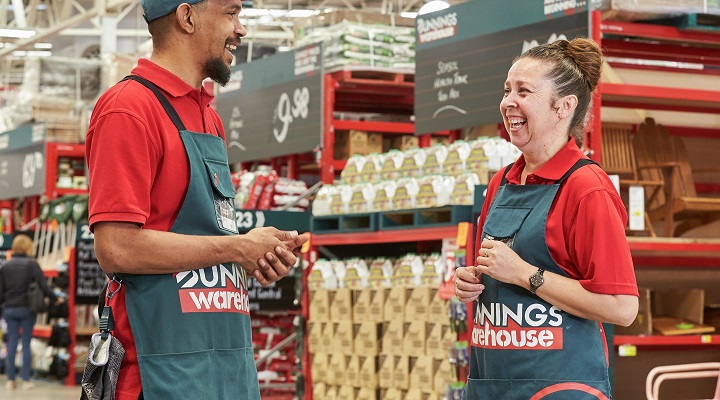Don’t let the latest retail sales figures fool you. Times are tough for some already and getting tougher for more before they get better. At least, that’s what the economists are telling us. And when times are tough, history says people pull up the drawbridge and focus on what is most important to them. When psychology reflects savage economics, we gravitate to value for money, home comfort (and improvement), little luxuries and family. That, of course, includes our extended family, namely o
y our furry friends that love us unconditionally and don’t know what inflation or wage growth even is.
Maybe that’s why they call pet care a recession-proof sector. What’s more likely is that with two-thirds of Aussie households pet owners, and the pet supplies sector forecast to increase to $4.6 billion in the next five years, there’s plenty of money to be made looking after mutts and moggies.
Kudos to Bunnings for recognising the opportunity. In case you missed it, Bunnings has announced an expanded pet care range that will offer 1,000 pet-related products taking up about 40sqm in-store. The new offer is expected to roll out across most stores by the end of March.
A rich vein to tap
Dogs, snags and a bit of home love at a time when people feel under siege. It’s a market-disrupting combination with impeccable timing.
It’s no doubt a plan Bunnings started to cook up last year as interest rates continued their meteoric rise leading to three straight months of falls in building approvals. The reno gurus at Bunnings would have been getting nervous the building boom was coming to an end and started looking around for some additional revenue drivers.
And they didn’t have to look far. Dogs are Bunnings regulars with pooches of all shapes and sizes getting their shop on in-store. In 2015, a formal policy was introduced to allow dogs, provided they are either in a trolley or muzzled on a lead. And they’ve been dominating the aisles ever since.
Off the back of the Covid puppy boom – according to Google statistics, interest in getting a pet during the pandemic increased by 115 per cent – there are even more doggos filling the aisles. So why not cater to them too? The little buggers sure aren’t cheap with food, grooming and vet bills easily running into the thousands every year. It’s a rich vein to tap.
It’s also a testament to the brand’s ability to align with cultural moments and follows Bunnings’ clever efforts to capitalise on the viral sensation of its humble $7 Bunnings hat after it graced the head of performer Harry Styles. A quick search on the Bunnings website for Styles brings up the hat.
Another example is the introduction of “sensory maps” for every store in Australia and New Zealand. Developed in collaboration with Amaze, an organisation that advocates for and supports people with autism and their families, the maps are available on the Bunnings website, and show shoppers where they’ll find brighter lights, louder noises and stronger smells.
As belts continue to tighten, more retailers will need to take a leaf out of the Bunnings playbook and find ways to innovate or widen their customer base. In the most recent Wesfarmers results, Bunnings’ revenue was up 1.5 per cent to $1.28 billion, a figure they will be keen to best in the coming months.
How to follow suit
If you’re thinking about how you can follow suit, a good place to start is to look at your product range and existing customers. What ancillary products could you be offering that complement your range or fill a gap for customers? What sorts of products can you integrate into your stores that make sense but are interesting enough to generate some earned media attention for your brand? The announcement has certainly generated plenty of buzz and column inches for the brand. This article is case in point.
Still, not everyone is winning off the back of Bunnings’ big pet play. Independent pet supply stores were already doing it tough in the face of big-box stores like Petbarn and PetStock. With Wesfarmers’ purchasing and logistics power, not to mention their merchandising expertise, and category-killing reputation delivered via a true everyday low-price strategy, they’ll be packing up their pet store franchise pretty soon.
As for me, I’ll be taking the dog (and probably more often) and not only buying what I need for her, but also what I perhaps don’t actually need for her and my shed…and I guess that’s the plan in a nutshell.

